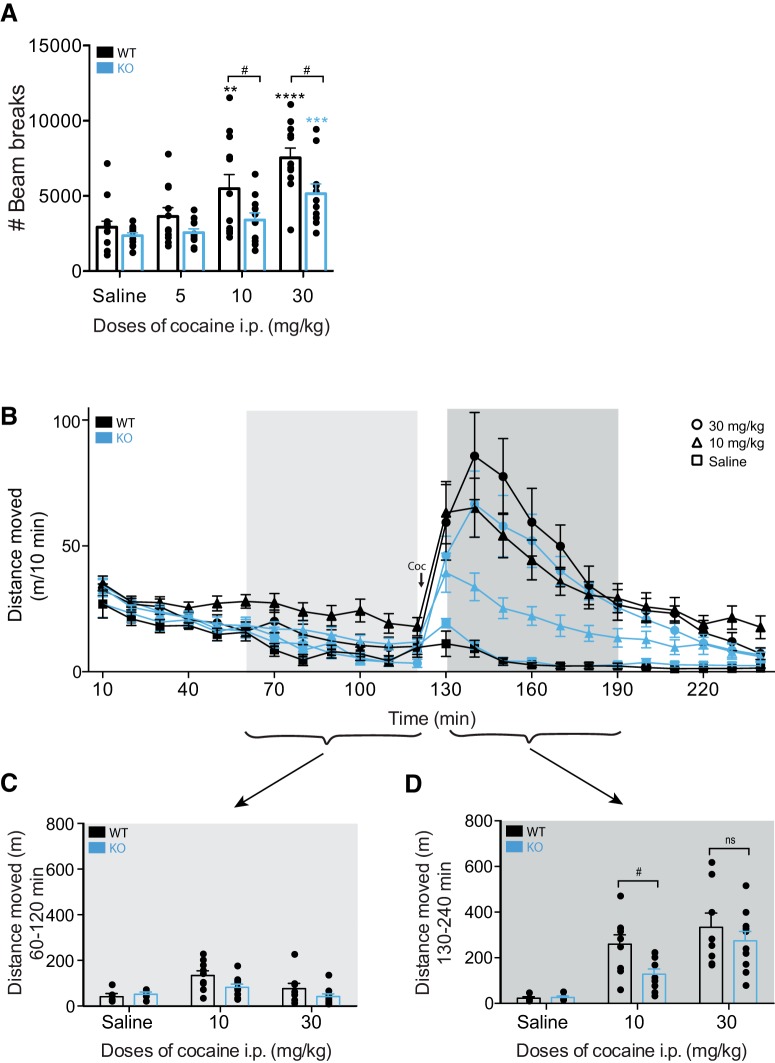Figure 1.
Impaired locomotor response to cocaine in PICK1 KO mice. A, Mice were injected with the indicated doses of cocaine and locomotor activity (beam breaks) was recorded for 1 h. Two-way ANOVA followed by Holm–Sidak post hoc analysis revealed an overall significant difference between the genotypes (FGENOTYPE(1,87) = 14.91, p = 0.0002, FTREATMENT(3,87) = 17.5, p < 0.0001, FINTERACTION(3,87) = 1.88, p = 0.32) with multiple comparison revealing genotype differences in the behavioral response to both 10- and 30-mg/kg cocaine (saline; t(87) = 0.76, p = 0.45, 5 mg/kg; t(87) = 1.32, p = 0.342, 10 mg/kg; t(87) = 2.59, p = 0.033, 30 mg/kg; t(87) = 2.97, p = 0.015). B–D, Mice were placed in open field boxes and left to habituate for 120 min before being injected with the indicated doses of cocaine. Locomotor activity (distance moved in meters) was recorded for 2 h after cocaine injection. Analysis of the 60 min before and after drug injection reveals a significantly impaired cocaine response in the PICK1 KO mice (FGENOTYPE = 4.16, df = 1, p = 0.048, FTREATMENT = 14.24, p < 0.0001, df = 2, FINJECTION = 131.69, p < 0.0001, df = 1, FGENOTYPE*TREATMENT = 1.62, p = 0.21, df = 2). C, Locomotor activity of the last 60 min before drug injection. D, Locomotor activity of the first 60 min after drug injection with post hoc analysis revealing a significant difference at 10-mg/kg cocaine (saline; t(8) = 0.36, p = 0.73, 10 mg/kg; t(17) = 2.87, p = 0.01, 30 mg/kg; t(16) = 0.82, p = 0.44). WT, wild type; * indicates versus own saline, # indicates genotype comparisons. All data expressed as mean ± SEM.

